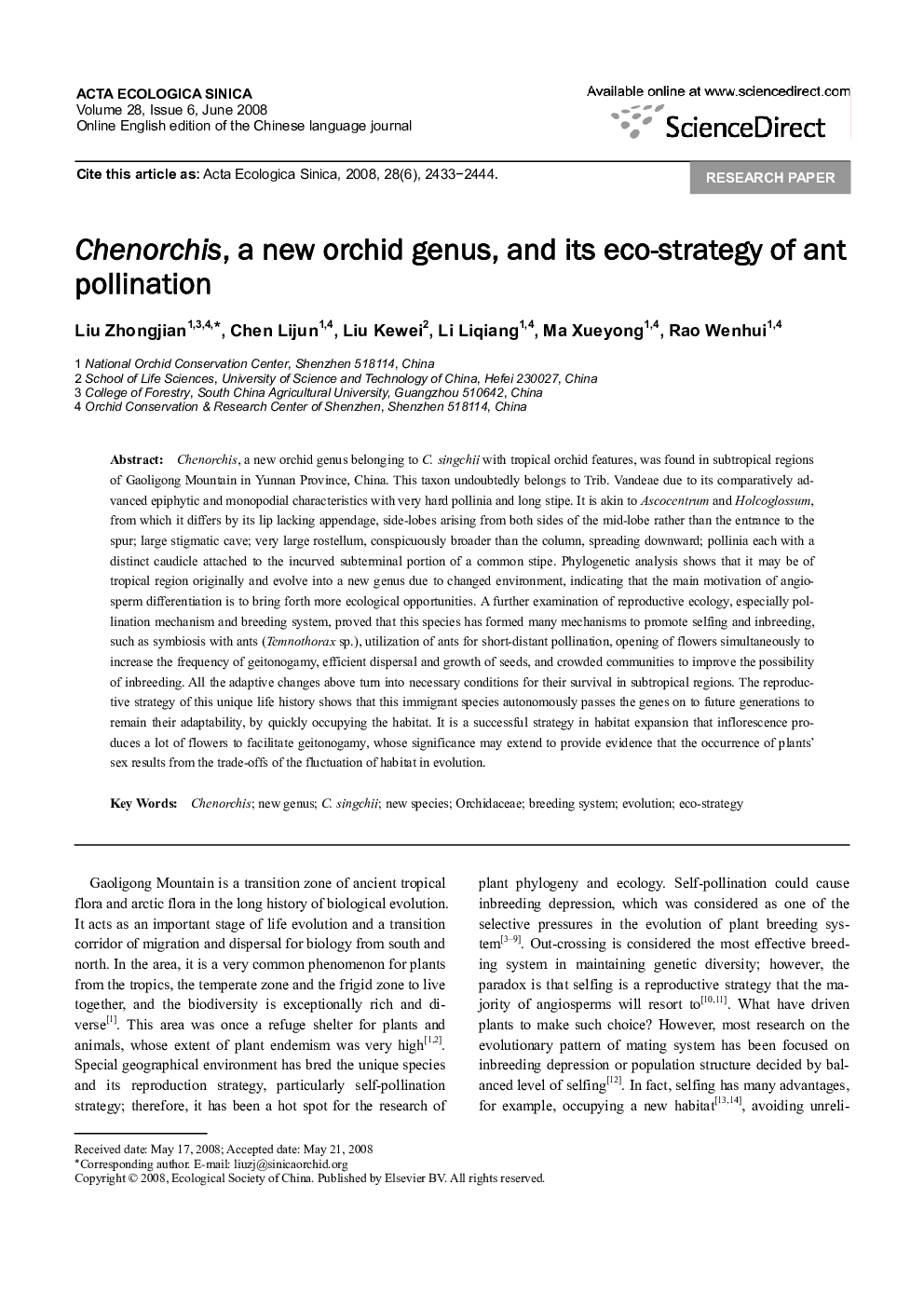| کد مقاله | کد نشریه | سال انتشار | مقاله انگلیسی | نسخه تمام متن |
|---|---|---|---|---|
| 4380400 | 1303993 | 2008 | 12 صفحه PDF | دانلود رایگان |

Chenorchis, a new orchid genus belonging to C. singchii with tropical orchid features, was found in subtropical regions of Gaoligong Mountain in Yunnan Province, China. This taxon undoubtedly belongs to Trib. Vandeae due to its comparatively advanced epiphytic and monopodial characteristics with very hard pollinia and long stipe. It is akin to Ascocentrum and Holcoglossum, from which it differs by its lip lacking appendage, side-lobes arising from both sides of the mid-lobe rather than the entrance to the spur; large stigmatic cave; very large rostellum, conspicuously broader than the column, spreading downward; pollinia each with a distinct caudicle attached to the incurved subterminal portion of a common stipe. Phylogenetic analysis shows that it may be of tropical region originally and evolve into a new genus due to changed environment, indicating that the main motivation of angiosperm differentiation is to bring forth more ecological opportunities. A further examination of reproductive ecology, especially pollination mechanism and breeding system, proved that this species has formed many mechanisms to promote selfing and inbreeding, such as symbiosis with ants (Temnothorax sp.), utilization of ants for short-distant pollination, opening of flowers simultaneously to increase the frequency of geitonogamy, efficient dispersal and growth of seeds, and crowded communities to improve the possibility of inbreeding. All the adaptive changes above turn into necessary conditions for their survival in subtropical regions. The reproductive strategy of this unique life history shows that this immigrant species autonomously passes the genes on to future generations to remain their adaptability, by quickly occupying the habitat. It is a successful strategy in habitat expansion that inflorescence produces a lot of flowers to facilitate geitonogamy, whose significance may extend to provide evidence that the occurrence of plants' sex results from the trade-offs of the fluctuation of habitat in evolution.
Journal: Acta Ecologica Sinica - Volume 28, Issue 6, June 2008, Pages 2433-2444